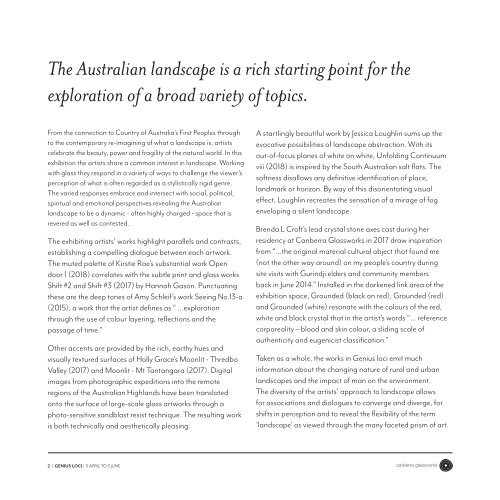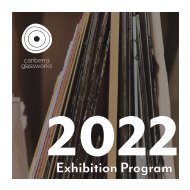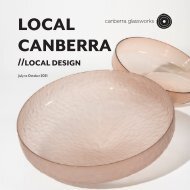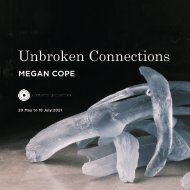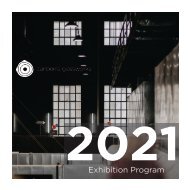Genius loci
The landscape is a rich starting point for the exploration of a broad variety of topics. From the connection to Country of Australia’s First Peoples through to the contemporary re-imagining of what a landscape is, artists celebrate the beauty, power and fragility of the natural world. In this exhibition the artists share a common interest in landscape. Working with glass they respond in a variety of ways to challenge the viewer’s perception of what is often regarded as a stylistically rigid genre.
The landscape is a rich starting point for the exploration of a broad variety of topics. From the connection to Country of Australia’s First Peoples through to the contemporary re-imagining of what a landscape is, artists celebrate the beauty, power and fragility of the natural world. In this exhibition the artists share a common interest in landscape. Working with glass they respond in a variety of ways to challenge the viewer’s perception of what is often regarded as a stylistically rigid genre.
You also want an ePaper? Increase the reach of your titles
YUMPU automatically turns print PDFs into web optimized ePapers that Google loves.
The Australian landscape is a rich starting point for the<br />
exploration of a broad variety of topics.<br />
From the connection to Country of Australia’s First Peoples through<br />
to the contemporary re-imagining of what a landscape is, artists<br />
celebrate the beauty, power and fragility of the natural world. In this<br />
exhibition the artists share a common interest in landscape. Working<br />
with glass they respond in a variety of ways to challenge the viewer’s<br />
perception of what is often regarded as a stylistically rigid genre.<br />
The varied responses embrace and intersect with social, political,<br />
spiritual and emotional perspectives revealing the Australian<br />
landscape to be a dynamic - often highly charged - space that is<br />
revered as well as contested.<br />
The exhibiting artists’ works highlight parallels and contrasts,<br />
establishing a compelling dialogue between each artwork.<br />
The muted palette of Kirstie Rae’s substantial work Open<br />
door 1 (2018) correlates with the subtle print and glass works<br />
Shift #2 and Shift #3 (2017) by Hannah Gason. Punctuating<br />
these are the deep tones of Amy Schleif’s work Seeing No.13-a<br />
(2015), a work that the artist defines as “ …exploration<br />
through the use of colour layering, reflections and the<br />
passage of time.”<br />
Other accents are provided by the rich, earthy hues and<br />
visually textured surfaces of Holly Grace’s Moonlit - Thredbo<br />
Valley (2017) and Moonlit - Mt Tantangara (2017). Digital<br />
images from photographic expeditions into the remote<br />
regions of the Australian Highlands have been translated<br />
onto the surface of large-scale glass artworks through a<br />
photo-sensitive sandblast resist technique. The resulting work<br />
is both technically and aesthetically pleasing.<br />
A startlingly beautiful work by Jessica Loughlin sums up the<br />
evocative possibilities of landscape abstraction. With its<br />
out-of-focus planes of white on white, Unfolding Continuum<br />
viii (2018) is inspired by the South Australian salt flats. The<br />
softness disallows any definitive identification of place,<br />
landmark or horizon. By way of this disorientating visual<br />
effect, Loughlin recreates the sensation of a mirage of fog<br />
enveloping a silent landscape.<br />
Brenda L Croft’s lead crystal stone axes cast during her<br />
residency at Canberra Glassworks in 2017 draw inspiration<br />
from “…the original material cultural object that found me<br />
(not the other way around) on my people’s country during<br />
site visits with Gurindji elders and community members<br />
back in June 2014.” Installed in the darkened link area of the<br />
exhibition space, Grounded (black on red), Grounded (red)<br />
and Grounded (white) resonate with the colours of the red,<br />
white and black crystal that in the artist’s words “… reference<br />
corporeality – blood and skin colour, a sliding scale of<br />
authenticity and eugenicist classification.”<br />
Taken as a whole, the works in <strong>Genius</strong> <strong>loci</strong> emit much<br />
information about the changing nature of rural and urban<br />
landscapes and the impact of man on the environment.<br />
The diversity of the artists’ approach to landscape allows<br />
for associations and dialogues to converge and diverge, for<br />
shifts in perception and to reveal the flexibility of the term<br />
‘landscape’ as viewed through the many faceted prism of art.<br />
2 | GENIUS LOCI | 5 APRIL TO 3 JUNE


